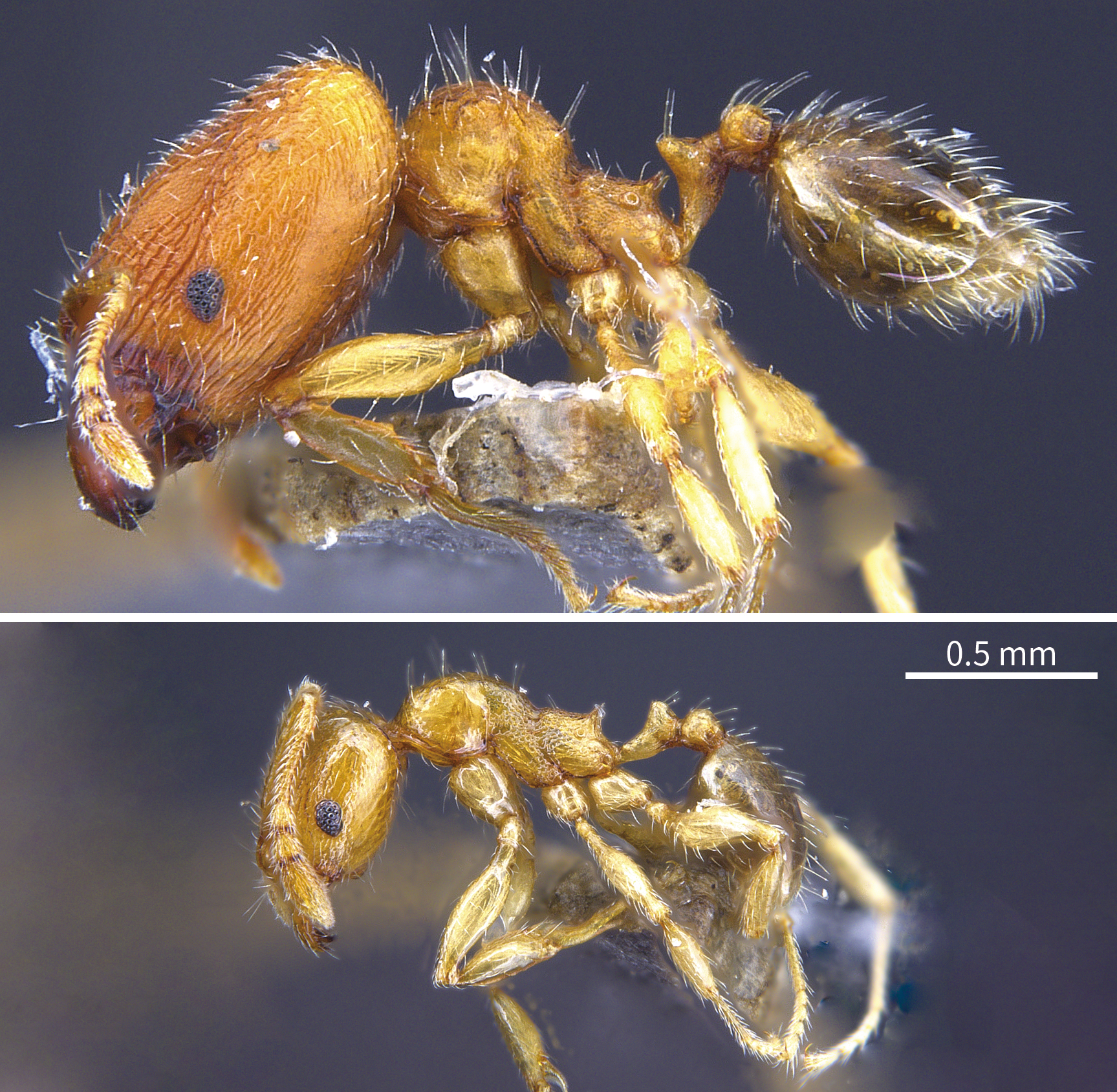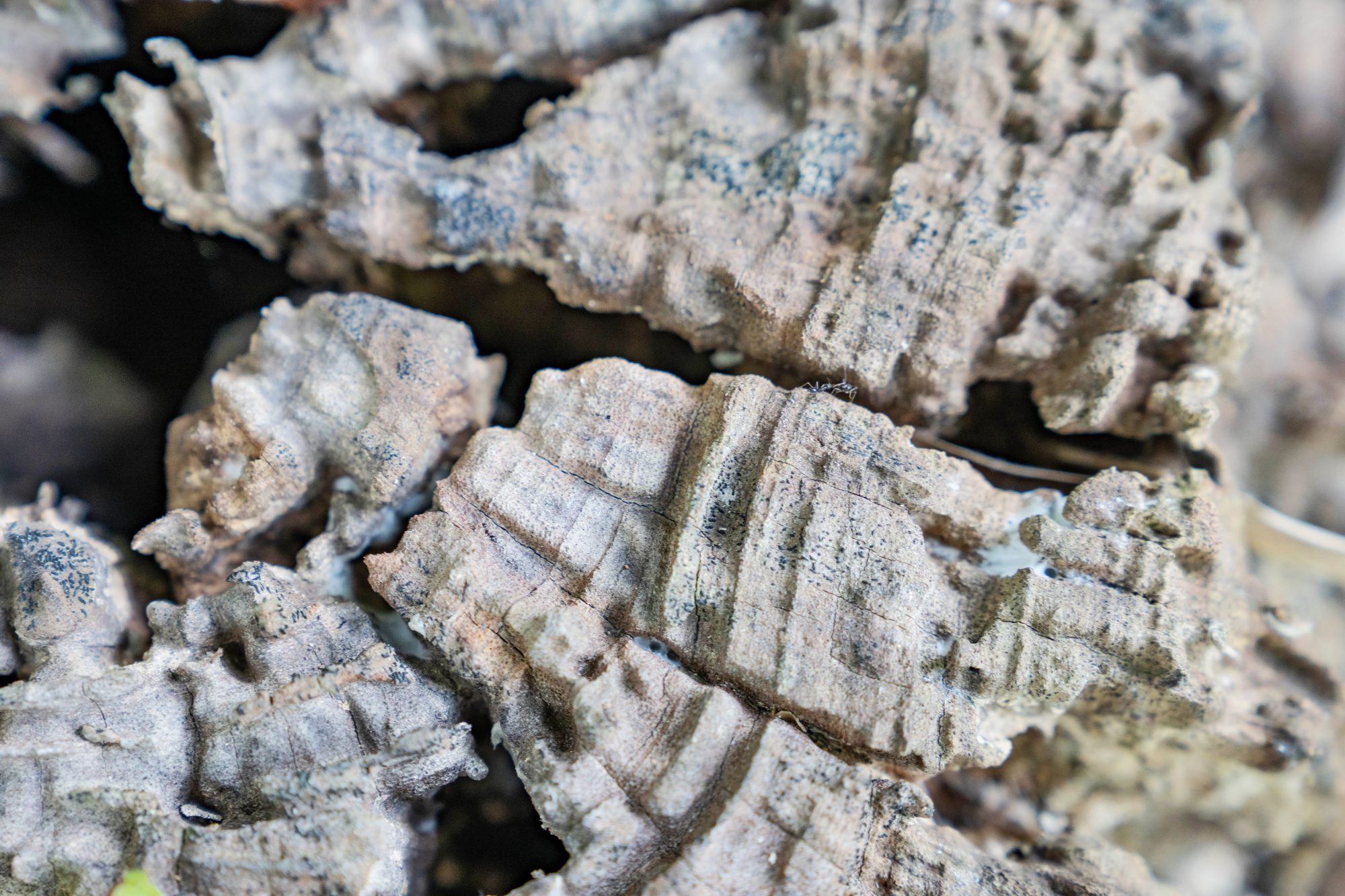
What is an ‘ant’?
A brief introduction to the biology and ecology of ants
Ants belong to an order of insects called Hymenoptera, which also includes bees, bumblebees, and wasps. Scientists estimate that ants evolved about 120 to 140 million years ago, most likely from a wasp-like ancestor. They remained relatively uncommon for several million years, and only at the start of the Eocene, about 55 million years ago, ants started becoming abundant and diversified to the level that we observe today.
All ants belong to a single family, the Formicidae, which is, without a doubt, one of the most successful group of organisms on this planet, with nearly 16,000 species described. This represents as many species as all bird and mammal combined, and yet scientists estimate that just half of the ant species have been discovered! Contrary to what is sometimes thought (and how the Chinese common name may have suggested), termites are not closely related to ants, nor to other Hymenoptera, but instead belong to a different order Blattodea and are related to cockroaches. Yes, termites are social roaches!

The diverse world of ants
But let’s come back to ants. Ants have conquered all continents (except Antarctica) and are found in all types of habitats, from the most arid deserts to the humid tropical rainforest, from savannah to inside our home, from caves hundreds of meters deep to the peak of mountains above 4000 m. In terrestrial habitats, they have evolved and colonized all kinds of places (what ecologists call niches). Some build nests deep underground (as deep as 7m!), while other live within decaying wood on the ground, under rocks, or at the top of the tree canopy inside hollow branches or within complex ant-made nest structures constituted of sewed leaves or carton pulp.
All these ant species have evolved a wide range of lifestyles and diets. If in general ants have a preference for animal proteins, and in particular for other insect or arthropod species, they do not all eat the same food. Some species are extremely specialized on hunting a single group of arthropods, such as the miniature trap-jaw ants (the genus Strumigenys) which feed exclusively on springtails (Collembolan), while other will have a more generalized diet, which includes proteins regardless of their origin, as well as lipids from seeds, or sugar from plant secretion, fruits and honeydew produced by sap-sucking insects. Let’s not forget to mention that some species feed on fungi either directly, or more surprisingly, by cultivating fungi for consumption inside their nests. Yes, that’s right, some ant species (although they can only be found in Americas) have developed agriculture at around 25 million years ago, well before human (12,000 years ago).
The social ants
Ants’ astonishing success can be attributed to several reasons, but one in particular: sociality. Ants are social insects, or rather eusocial insects to be exact, like termites, some bees and wasps (but note that the majority of bees and wasps are non-social). To date, none of the 16,000 ant species is known to be solitary. Eusocial insects are species for which individuals, usually related to each other’s: 1) cooperate to perform a number of tasks, including taking care of their offspring; 2) with a division of labor such that there are reproductive and non-reproductive individuals; and 3) characterized by an overlapping of two or more generations within a colony. In another word, only certain individuals in a colony are responsible for reproduction, and this is, mostly, the only thing they do throughout their lives! We would say that they are specialized for reproduction. At the same time, the other, non-reproductive adults in the colony are responsible for all the other duties, such as taking care of brood (eggs, larvae and pupae), finding food, building and defending the nest, etc. Being a social insect means that ants are able to, often, utilize numerical advantage and collectively build their nest, defend it and forage for food, and this is why ants are so successful!
One thing that often comes into our minds when we talk about ants is that they form colonies. But what is a colony? What is its difference with the term ‘nest’? In short, nest is the physical structure where the ants live, while colony is the social structure for which members cooperate with one another. Under most circumstances, ants will be aggressive towards ants that are from a different colony. For most ant species, one colony will only have a single nest. However, it is possible, for some species, for a colony to have multiple nests! We describe these ants as polydomous (in contrast with monodomous for ants having a single nest). Members from different nests of the same colony are still able to recognized one another, despite their physical separation, using chemical signature that is unique to each colony. Why having multiple nests then? Simply to be more efficient! They can control a territory better and exploit resources like food more efficiently by reducing distance between potential food source and the nearest nest. Clever ants!
Queens, workers and males

As mentioned above, a division of labor in found within a colony. The ants’ different roles (which are predetermined before they become adults) are known as ‘caste’. There are three common castes of ants: male, reproductive female (queen or gyne) and non-reproductive female (worker or ergate). Male ants are usually very short-lived and die soon after mating (many do not even have a developed mouth for feeding!). They hatch from unfertilized eggs and only appear during certain period of the year (known as the swarm or nuptial season). Females are usually much more long-lived (for worker it may be several years, for queen it may even be a few decades!) and they hatch from fertilized eggs. Queens are responsible for egg-laying, while workers are responsible for all the other duties: taking care of brood, foraging for food, building, maintaining and defending the nest. Queens and males are usually winged (alate) such that they can fly to disperse (but in some species there are wingless queens or males!), mate during swarm season and form new colonies (by queens only). The term of queen may be a bit misleading as in human societies we tend to associate it with some kind of decisional power. In ants, however, the queen does not govern, nor any other ants in the colony. The society is self-organized without any central power, and with each individual contributing to the growth of the colony in its own way. Of course, this does not mean that ant colonies are devoid of conflicts and errors (all the opposite).

Be aware that size difference between major and minor workers depends on species, hence are not always this extreme.
For some ant species, the castes in a colony can be further subdivided into subcastes. They are defined based on the morphological differences of individuals and their roles within the colony. When those occur in the worker caste, we call these species polymorphic (in contrast with monomorphic ants, where caste cannot be further broken down into subcastes). For polymorphic ants, workers can be subdivided into major and minor workers (or minima, media, supermajor, if more than 2 sizes are recognized). Major workers (or soldier) are often bigger in size and have stronger mandibles. They are responsible for defending the nest and performing other heavy duties close to the nest (e.g., bringing large food items back to colony, cutting big pieces or even milling seeds). On the other hand, minor workers focus on nest construction, brood care and foraging relatively far away from the nest. Even though workers are usually non-reproductive, they are still able to lay non-fertilized eggs if they have complete ovaries. These non-fertilized eggs (known as trophic eggs) can serve as an alternative food source for their queens and larvae! When the colony has lost its queen, non-fertilized eggs will hatch into males instead. In rare cases, workers known as gamergates can mate with male and are responsible for reproduction as well (sometimes even entirely replaced queen ants!).
When there is only one egg-laying queen in the colony (i.e., monogynous colony), workers in the same colony are siblings with one another. But it is also possible that there are multiple egg-laying queens in the same colony (i.e., polygynous colony)! If the queens do not tolerate one another and live far apart in the nest, it is known as oligogyny, which is a special kind of polygyny. For both general polygyny and oligogyny, workers from the same colony take care of all the queens equally. While workers in a polygynous colony are less related with one another than in monogynous colony, it allows the formation of a much bigger colony and be more competitive within the habitat. Polygynous colonies are also much more resistant to disturbance as the death of one or a few queens does not mean the end of the colony. As a result, some polygynous colonies are virtually immortal as they continuously produce or adopt new queens!
This is only a simple introduction on the fascinating world of ants. As you can imagine, with so many living species, many more interesting strategies have evolved in ants, some likely remaining unknown to us! We will talk about other aspects of ants in the following sections. We hope you will find this interesting and come to appreciate these amazing tiny creatures a little more!
